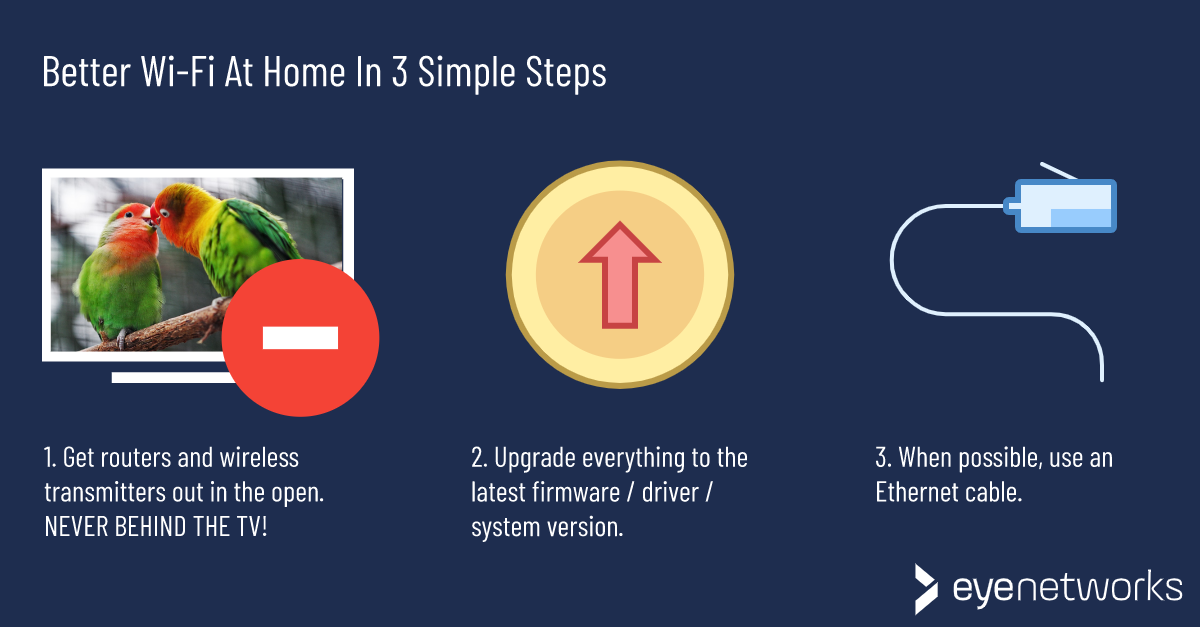Three measures you can take to prevent unstable wifi and poor coverage, without leaving your home or buying new equipment. And something you should avoid.
1. Don’t hide your router away (no matter how ugly it is)
Clear away any obstacles to wifi, and leave your router out in the open! Hygiene and keeping a tidy house are important, but wifi signals need a clear line of sight to work well:
- Place your router / access point / repeater as high up and free of obstacles as possible.
- Wifi transmitters should NEVER be placed behind a TV set or stereo system, under a dresser, inside a cabinet, or similar. Up and out in the open!
- The location of the router is often limited by where network outlets are available, but if you have the option to give your router or access point a more central location, do it.
You can read more about this here: Stop clearing away your wifi signal
2. Upgrade everything
Always use the latest firmware — make sure you have all system updates and drivers for:
- Your router / Wi-Fi repeater / other wireless access point
- All PCs and gaming consoles
- All mobile phones, tablets, and other connected devices in the household
Especially for older computers, smartphones, and gadgets, this can be crucial to working well with newer network equipment.
If you have a Windows computer with a wireless adapter from Intel, you should install Intel’s own driver update application, as several of their most important updates have not been included in collective Windows updates. You can read more about this here (the Intel issues are not exclusive to Wi-Fi 6): Wifi 6: Compatibility issues you should know about.
Do you have Wi-Fi problems with a specific computer or device? Take a look at Checklist when you can’t connect to Wi-Fi (or get thrown off)
3. Use a network cable when possible
If you have a desktop computer, gaming console or other equipment near the router and/or network outlet, connect it by Ethernet cable provided you have one available.
Wired internet access will always be more stable than wireless, and each device using a cable is one less fighting over wireless capacity.
Last but not least: Do not sabotage others
- DO NOT attempt to increase the transmission strength by building an antenna amplifier/booster, increasing the channel width, or similar. You can sabotage both your neighbor’s network and your own (and also make your own network more sensitive to interference from neighbors).
- If you have the time and desire to go deeper, we have a longer list of tips you can follow to map and improve your home network here.
- Avoid putting additional strain on the mobile networks, keep using Wi-Fi if at all possible.
